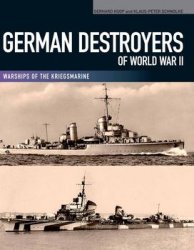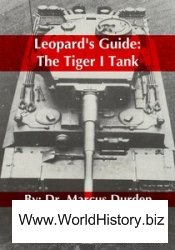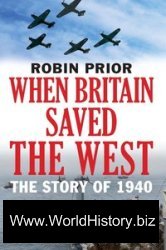Knowing that the Kelly Air Mail law will allow aircraft to compete with his motor coaches, Oregon bus operator Vern C. Gorst and a number of his colleagues elect to win an airmail contract route for themselves in order to control the competition. Gorst’s friend, aircraft builder Claude B. Ryan, is persuaded to employ one of his new M-1 cabin monoplanes to take him on a return survey flight along the Pacific coast from Seattle to San Francisco, and over the dangerous Siskiyou Mountains. Meanwhile, Gorst and the bus owners incorporate Pacific Air Transport at North Bend on January 8, 1926 and apply for the Post Office’s Contract Air Mail Route No. 8 (CAM-8) from Los Angeles to Seattle. The route is awarded to them on January 27.
A natural promoter, Gorst now hires 10 pilots and together they visit towns and communities along the 1,152-mile route selling the company—literally; a total of $175,000 in company stock is sold during the tour. Many towns are persuaded to open community airfields. In addition, Standard Oil Company agrees to paint town names atop its buildings and a lighted airway is created by erecting automobile headlights on buildings, poles, hilltops, etc.
To supplement the Travel Air and WACO biplanes already on hand, Gorst now orders first six, then eight, Ryan M-1 mailplanes. These high-wing monoplanes arrive in August, along with two more Travel Airs and a Curtiss Swallow. Taking off at dark from different directions so as to complete the multistop flight in a day, two M-1s inaugurate CAM-8 mail service on September 15.
En route to Seattle from Los Angeles on November 12-13, an M-1 piloted by Charles Eidmer with mechanic Donald Rossiter aboard encounters rain and goes into a spin over Van Nuys; Eidmer safely bails out, but Rossiter is killed. Pilot R. B. “Pat” Patterson is killed on December 16 when his M-1 crashes into the face of Mount Ashland, south of Medford, Oregon. On the year, the company flies 33 intrepid passengers to points along its route; outfitted in goggles, helmets, and parachutes, they ride along with the mail. Sight-seeing flights handle 69 more customers.
Service continues apace in 1927. Many flights can be offered at night, as the Los Angeles-Oregon route is lighted. Still, flying is dangerous. An M-1 piloted by Edward Nehet, flying mail and company inspector Alfred Schaeffer, crashes near Merced, California, on April 3 (two dead).
Constantly in need of funding, CEO Gorst manages to attract the attention of Wells Fargo Bank official William A. “Pat” Patterson, who not only grants a loan, but monitors it to the point of acting as PAT’s unofficial chief advisor and accountant as well.
Competition in the California market, especially from the big Ford Tri-Motors of Maddux Air Lines, intensifies. Early on October 26, an M-1 goes out of control north of Los Angeles and crashes; pilot Charles Bowman safely parachutes. Caught in a windstorm over Shafter, California, on Christmas Day, pilot James Rutledge parachutes safely from his M-1. Late in the month, Patterson suggests Gorst turn down a merger proposal from Harris “Pop” Hanshue of Western Air Express (WAE).
Patterson next recommends to William “Bill” Boeing that he consider acquiring PAT and advises Gorst that, if the transaction occurs, all of the employees of his financially strapped airline will keep their jobs and the stockholders will be protected.
On the year, company aircraft transport 1,252 passengers and 76,237 pounds of mail over 693,350 miles.
To provide a connection between its aircraft factory at Seattle and the transcontinental terminus of San Francisco, Boeing Air Transport (BAT) purchases control of PAT on January 1, 1928, allowing it to operate as a subsidiary under its own name. Gorst receives $94,000 for his stock and Patterson returns to Wells Fargo, but only briefly; he will soon become a Boeing official and eventually president/CEO of United Air Lines. Flying mail over Shasta Springs, California, on January 22, pilot Arthur Starbuck survives when his Travel Air 4000 is forced to the ground by a severe downdraft.
The Fokker Model 4 Universal of pilot James L. Rutledge runs out of gas on March 29 and crashes near Orinda, California. Caught in heavy fog over Canyon City, Oregon, on October 2, a Boeing 40C, piloted by Harry Donaldson with O. P. Donavan, crashes into a tree; Donavan is killed. On October 30, Boeing Airplane and Transport Corporation is formed as the holding company for both BAT and PAT; on December 17, Pacific is merged into BAT.
During the year, PAT carries a total of 1,484 passengers, 117,658 pounds of mail, and 20,319 pounds of express over 703,542 miles.
PAT continues to fly in 1929 and on the year transports 3,279 passengers and 254,457 pounds of mail over 830,000 miles. Operations continue in 1930. Upon takeoff on May 9, a Boeing 40B-4 hits a wagon and crashes; there are no significant injuries. By early August, the entire 1,200-mile route between Seattle and San Diego is lighted. As a result, the carrier begins to offer Boeing 40B-4 overnight service on August 15. En route to Portland from Burbank on November 18-19, a Boeing 40B-4 crashes in the Techachapi Mountains near Ridge Route, California (three dead).
Being ferried to Seattle, a Boeing 40B-4 encounters heavy fog and sleet over Crescent Lake, Oregon, on January 1, 1931 and crashes. On
March 16, the West Coast Air Transport subsidiary of Western Air Express (WAE) is purchased, along with its three Fokker F-10As and Seattle-San Francisco route. While attempting to land at Burbank on May 4, a Boeing 40C crashes in the Verdugo Mountains (two dead). On July 1, PAT is a merger partner in the creation of the new United Air Lines.
PACIFIC AIRLINES: United States (1975). Following its takeover of the Long Beach Douglas DC-3 operator Pacific Coast Airlines (1), San Francisco-based Pacific Northwest Airlines is renamed during the first quarter of 1975. The fleet now includes de Havilland DH 104 Doves, Convair CV-240s, Beech 18s, and DC-3s.
Operations continue apace over a route network that includes stops at Oakland, San Jose, Fresno, Bakersfield, and Monterey. Unable to achieve economic viability, the company closes its doors before year’s end.
PACIFIC AIRLINES, S. A.: 112 Hong Ha Street, Tan Binh District, Ho Chi Minh City, Vietnam; Phone 84 (8) 845-0090; Fax 84 (8) 8450085; Code BL; Year Founded 1992. Pacific Airlines is formed at Ho Chi Minh City in 1992 and is the first new carrier formed in the People’s Republic of Vietnam following changes in the law allowing foreign investment in the nation’s air transport system. The airline is the only joint-stock (or public limited company) airline in Vietnam, its ownership being divided between Vietnam Airlines, S. A., Ho Chi Minh City, U-Land Airlines, Ltd., and Saigon Tourism.
Charter all-cargo flights are offered and employing a Boeing 737-217 leased from Air Service Nantes, S. A., the company inaugurates a jointly operated route with AOM French Airlines, S. A. to Paris (ORY) via Bangkok and Karachi.
Daily return services are initiated in October from Vietnam to Taipei and Kao-hsiung.
Operations continue in 1993-1995. Airline employment in 1996 grows to 300. During the spring, a B-737-3Y0 is chartered from TEA Switzerland, Ltd. and inaugurates scheduled flights from Ho Chi Minh City to Hanoi via Da Nang. A B-737-2Y5A is subleased from TEA Cyprus, Ltd. and used to launch scheduled twice-weekly flights on October 22 from Da Nang and Ho Chi Minh City to Macau.
It is announced by Managing Director Duong Cao Thainguyen on May 13, 1997 that the carrier will sell space on the sides of their two leased Boeings for ads in a program reminiscent of the “logo jets” of Western Pacific Airlines.
On May 21, the company cancels its Macau to Ho Chi Minh City and Da Nang flights. In the fall, before any further progress on its expansion agenda can be addressed, the company is shut down, a victim of the Asian currency crisis.
With the regional economic situation improving in late 1999, the company is reopened. Daily roundtrips to Taiwan from Ho Chi Minh City, Da Nang, and Hanoi are resumed with a single McDonnell Douglas MD-82 chartered from the Taiwanese carrier U-Land Airlines, Ltd.
The workforce stands at 273 as 2000 begins. Wearing an all-white livery, a leased Airbus Industrie A310-324 enters service in June. Following the failure of U-Land Airlines, Ltd., Pacific replaces its MD-82 with an MD-90-30 leased from another Formosa-based company, Uni Airways Corporation, Ltd.
PACIFIC AIRWAYS (1): United States (1922). Employing a rare seven-passenger Curtiss HS-2L, license-built by William E. Boeing and christened Bluebird, Anscel C. Eckmann, a former Army pilot, establishes this operation at Madrona Park, Seattle, in 1922. Promotional pamphlets are sent around the Northwest, advertising single-passenger fares of $5 and charter rates of $50 per hour for five or less.
Although American owned, the plane is Canadian registered and is flown back and forth to Victoria and Vancouver, British Columbia, during the summer, transporting 450 passengers and half a ton of cargo. After the enterprise closes down for the winter, it does not resume.




 World History
World History









